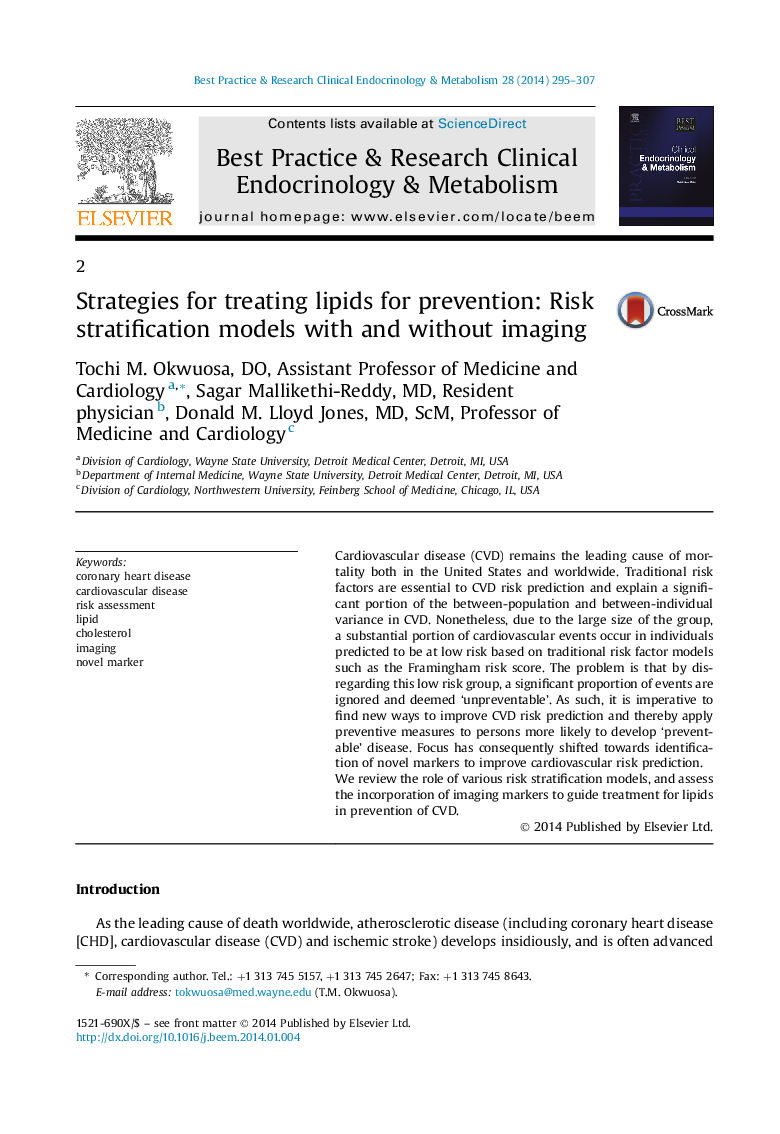| Article ID | Journal | Published Year | Pages | File Type |
|---|---|---|---|---|
| 2791622 | Best Practice & Research Clinical Endocrinology & Metabolism | 2014 | 13 Pages |
Cardiovascular disease (CVD) remains the leading cause of mortality both in the United States and worldwide. Traditional risk factors are essential to CVD risk prediction and explain a significant portion of the between-population and between-individual variance in CVD. Nonetheless, due to the large size of the group, a substantial portion of cardiovascular events occur in individuals predicted to be at low risk based on traditional risk factor models such as the Framingham risk score. The problem is that by disregarding this low risk group, a significant proportion of events are ignored and deemed ‘unpreventable’. As such, it is imperative to find new ways to improve CVD risk prediction and thereby apply preventive measures to persons more likely to develop ‘preventable’ disease. Focus has consequently shifted towards identification of novel markers to improve cardiovascular risk prediction.We review the role of various risk stratification models, and assess the incorporation of imaging markers to guide treatment for lipids in prevention of CVD.
